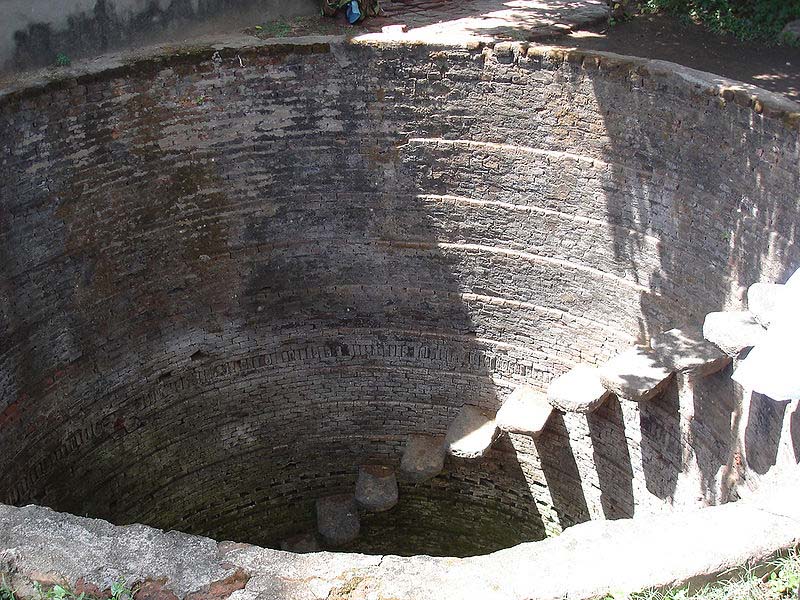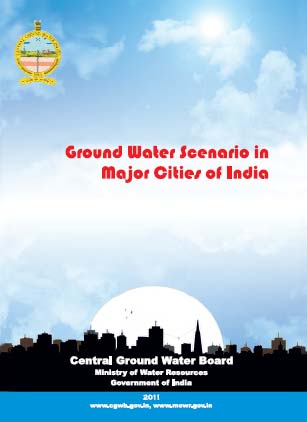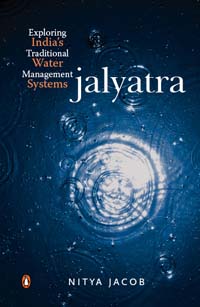Finding Groundwater
Geospatial technology for groundwater management – An article in Geospatial World
Posted on 13 Jul, 2011 03:05 PM
Guidelines for successful well site selection – A paper in Current Science
Posted on 16 Jun, 2011 07:57 PMGroundwater is a natural replenishable resource. It is an important source for various purposes, including drinking, irrigation and industrial, due to insufficient surface water supply and frequent failure of monsoon. Identification of groundwater zones depends upon many factors such as distribution of rainfall, runoff, grain size of soil, topographic features, type of landform, drainage conditions, lithological characteristics, land use practices, depth to groundwater level and environmental constraints, which are not uniform in any area.

Image courtesy: Wikimedia Commons
Groundwater management in Andhra Pradesh - Time to address real issues – A report by Institute for Resource Analysis and Policy
Posted on 17 May, 2011 02:16 PMWith 49 per cent of the total irrigation from groundwater, the state of Andhra Pradesh accounts for 5.3 per cent of the net groundwater irrigated area in the country.
Groundwater scenario in major cities of India – A report by Central Ground Water Board
Posted on 17 May, 2011 10:35 AM It covers varying groundwater scenarios in the country including the highly developed metros, the hilly region, the coastal cities, the cities tapping unconsolidated and hard rock aquifers. The report briefly describes the administrative set up, status of water supply and demand, groundwater scenario, feasibility of rainwater harvesting and groundwater development strategy.
It covers varying groundwater scenarios in the country including the highly developed metros, the hilly region, the coastal cities, the cities tapping unconsolidated and hard rock aquifers. The report briefly describes the administrative set up, status of water supply and demand, groundwater scenario, feasibility of rainwater harvesting and groundwater development strategy.
It is an updated version of an earlier report on “Groundwater in urban environment in India” (2000). Since then, groundwater regime, urban demography and water demand have changed enormously. This report will form a scientific base for an in-depth understanding of urban groundwater system including aquifer geometry, water level behavior and groundwater quality. The possibility of artificial recharge to rejuvenate the urban aquifers has also been discussed.
Agencies monitoring groundwater level in various parts of India in 2011 A list by the Central Ground Water Board
Posted on 16 May, 2011 07:26 PM
The CGWB has been monitoring groundwater levels on a quarterly basis during January, April/ May, August and November through a network of about 15000 observation wells located all over the country. This data is used for assessment of groundwater resources and changes in the regime consequent to various development and management activities.
Jalyatra: Exploring India's traditional water management systems
Posted on 14 May, 2011 07:34 PM Jalyatra - Exploring India's traditional water management systems, by Nitya Jacob is an ecological travelogue that looks at links between water, society and places It describes in detail what existed, how it fitted into the socio-cultural milieu and was appropriate for the local climate and geography. It then examines reasons for their decline, as indeed most have, in recent decades.
Jalyatra - Exploring India's traditional water management systems, by Nitya Jacob is an ecological travelogue that looks at links between water, society and places It describes in detail what existed, how it fitted into the socio-cultural milieu and was appropriate for the local climate and geography. It then examines reasons for their decline, as indeed most have, in recent decades.
While recording the dismal state of traditional systems, the author stumbles upon small initiatives that have brought about significant transformation across regions. It refers to noisy hidrums and gharaats, the river-run flour mills of Uttaranchal, the technologies whose potential has yet to be fully realised. It looks at water harvesting structures of southern India—the eris and ooranis. However, it admits that the average person is singularly uninterested in protecting the environment.
Jalyatra captures the efforts of NGOs and enlightened individuals striving to revive these systems. It makes the case for a mass movement to revive traditional water management systems, especially village ponds, across the country as the way to ensure water security in India. In Chambal, the author meets Brij Mohan Gujjar, dacoit turned water conservationist, who is doing valuable work on the check dams designed to control the flow of water in the ravines; and in Shillong, Lan Potham shows him the uses of the easily available bamboo to construct the shyngiar which irrigates his areca nut plantation.
An analysis of West Bengal Ground Water Resources (Management, Control and Regulation) Act 2005
Posted on 11 May, 2011 02:17 PMIntroduction
Hydrology and quality of groundwater in and around Bangalore city - Review and excerpts from the report released in March 2011, by the Department of Mines and Geology (Govt of Karnataka)
Posted on 10 May, 2011 08:34 PMA welcome and important document, it brings up-to-date our understanding of the rapidly changing groundwater situation in Bangalore.
| Month | New borewells added each month | Borewells registered with BWSSB | Monthly % growth |
| Jan-09 | 91018 | ||
| Feb-09 | 924 | 91942 | 1.02 |
| Mar-09 | 705 | 92647 | 0.77 |
| Apr-09 | 965 | 93612 | 1.04 |
| May-09 | 1136 | 94748 | 1.21 |
| Jun-09 | 748 | 95496 | 0.79 |
| Jul-09 | 904 | 96400 | 0.95 |
| Aug-09 | 868 | 97268 | 0.90 |
| Sep-09 | 2062 | 99330 | 2.12 |
| Oct-09 | 838 | 100168 | 0.84 |
| Nov-09 | 875 | 101043 | 0.87 |
| Dec-09 | 2699 | 103742 | 2.67 |
| Jan-10 | 1759 | 105501 | 1.70 |
| Total as on Jan-2010 | 14483 | 105501 | 15.91 |
Growth of bore wells during February 2009 to January 2010 in Bangalore city
Groundwater: From mystery to management - An article by TN Narasimhan
Posted on 22 Apr, 2011 12:07 PMGroundwater has been used for domestic and irrigation needs from time immemorial. It is a component of the hydrological cycle, vital for human sustenance. Unlike surface water, groundwater cannot be readily observed. Consequently, it was long considered to be mysterious or even occult in nature, influencing legal decisions relating to groundwater ownership and use.
Adapting to the global groundwater crisis - Its usage needs to be regulated and monitored
Posted on 22 Apr, 2011 12:03 PMThe global groundwater crisis centers on withdrawals notably exceeding short term renewable storage. The current global groundwater crisis reflects the fact that over the past century, groundwater withdrawal has grown to exceed natural renewable groundwater storage. The single most important cause is the deep well turbine pump. Groundwater depletion is very high in both the United States and India.





